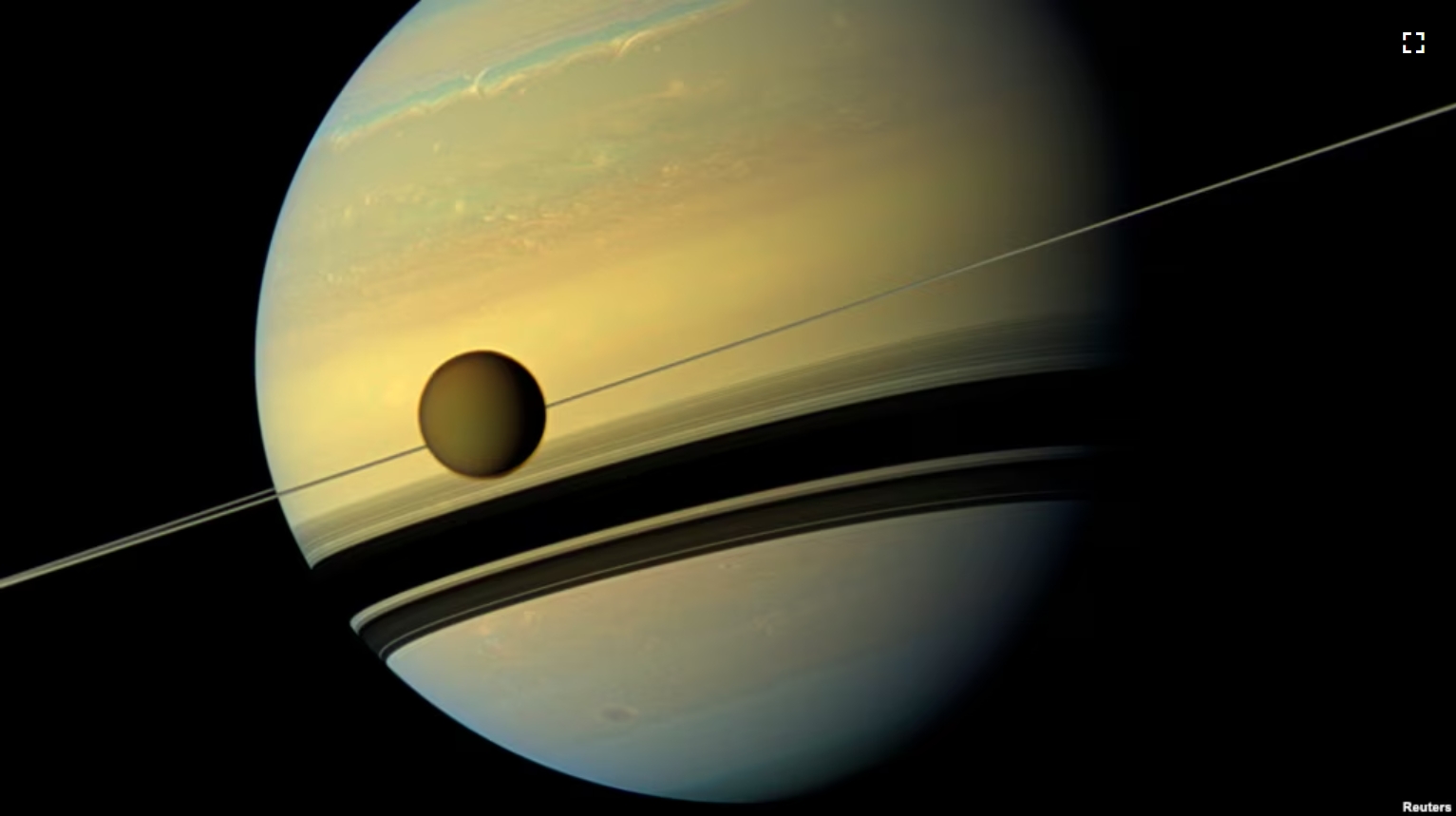New research suggests Saturn’s moon Titan has a thick ice cover that could be warming lower areas and supporting molecular growth.
Scientists at the University of Hawaii carried out the new study. It appears in The Planetary Science Journal. The findings add to existing evidence that Titan may hold the right mix of materials to support possible life.
No life forms have been confirmed on Titan, a cold, icy world. But past studies suggest the moon now has a large layer of ice that once supported widely flowing water on the surface. Titan is also thought to contain a dense atmosphere rich in nitrogen and methane, both of which are found in Earth’s own atmosphere.
NASA reports Saturn has a total of 146 moons orbiting it, more than any other planet. Titan, an ice giant, is the largest of them.
For more than 10 years, NASA’s Cassini spacecraft studied Saturn “and its complex system of rings and moons,” the space agency said. The new study used NASA data to closely examine surface details of Titan.
The researchers used computer modeling to examine different elements of Titan’s surface. One of the main discoveries was that many craters examined on Titan’s surface were not as deep as some other moons. The team reported that in some cases, craters were hundreds of meters shallower, or less deep, than scientists expected. In addition, only 90 craters were identified on the whole moon.
“This was very surprising because, based on other moons, we expect to see many more impact craters on the surface,” said University of Hawaii’s Lauren Schurmeier, who led the study.
She said the research team had also expected to see much deeper craters. “We realized something unique to Titan must be making them become shallower and disappear relatively quickly,” she said.
Computer modeling carried out by the researchers showed how the surface might have changed to remove signs of major impact craters. The researchers said one of the most likely causes of such change was that the moon’s icy surface is covered with a thick layer of solid water ice, with methane gas trapped inside.
The team said the data examinations suggest Titan has a methane-filled icy crust that is from five to 10 kilometers thick. The modeling operations run by the scientists produced images that looked similar to crater formations on Titan’s surface.
Schurmeier said the methane crust, “warms Titan’s interior” and can cause surprisingly fast changes to the surface structure. Schurmeier noted, for example, that crater shallowing on Titan is believed to be happening at a rate “that is close to that of fast-moving warm glaciers on Earth.”
The surface of Titan is estimated to be about minus 179 degrees Celsius. Because of this extreme cold, liquids on the moon’s surface take the form of ice, with methane gas locked inside, the researchers said. This gas could help warm surface levels beneath, possibly permitting molecules to rise toward the surface.
Schurmeier said studying the thickness of Titan’s icy crust is important because it might help explain how the moon’s atmosphere began to develop. The measurements could also provide additional information on Titan’s changing climate.
“Titan is a natural laboratory to study how the greenhouse gas methane warms and cycles through the atmosphere,” she said. The resulting information, she added, can provide important insights about such processes happening on Earth.
NASA’s Cassini spacecraft ended it mission in 2017, when it crashed into Saturn’s atmosphere. But the U.S. space agency has plans to send another explorer to Titan in 2028. That mission calls for a spacecraft called Dragonfly to travel to Titan to observe many different areas. The planned explorer, called a rotorcraft, operates similar to a helicopter.
I’m Bryan Lynn.
Bryan Lynn wrote this story for VOA Learning English, based on reports from the University of Hawaii at Manoa, the University of Lisbon and NASA.
Quiz – Study Finds Saturn’s Moon Titan has Huge Layer of Methane-filled Ice

Start the Quiz to find out
_________________________________________
Words in This Story
layer – n. an amount of something covering a surface
crater – n. a hole left in the ground by an object that hits it with a huge force
impact – n. the force or action of one object hitting another
unique – adj. different from everyone and everything else
crust – n. a hard, dry layer of the surface of something
glacier – n. a large mass of ice that moves very slowly, usually down a hill or valley
